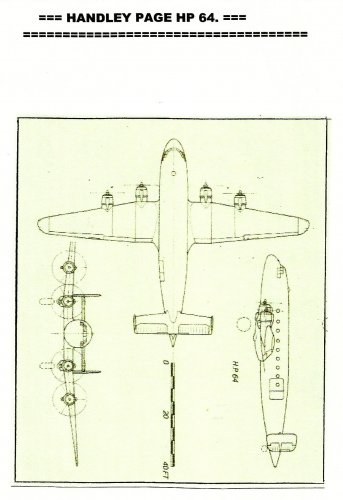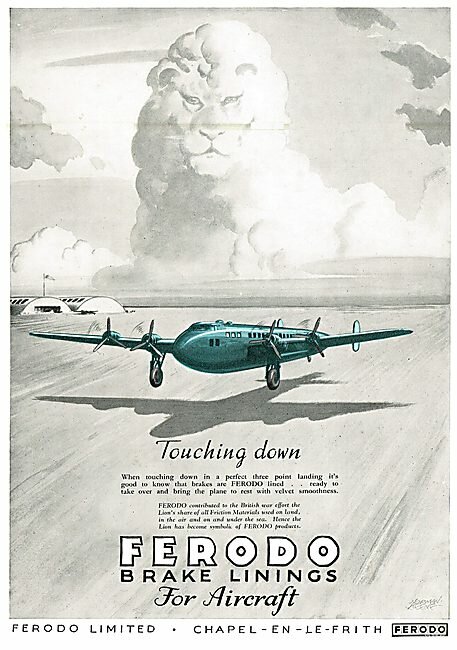- Joined
- 28 January 2008
- Messages
- 635
- Reaction score
- 512
The HP64 civilian airliner was to meet the BOAC requirement (along with a modified Avro York) submitted to the Brabazon Committee in 1943-44. Should it have been produced it would have been one of the first post-war British airliners.
G.R.Volkert began work on a preliminary design in May 1943. A mock-up was shown to BOAC officials at Radlett in the Spring of 1944, where they also inspected the detailed design. Wind tunnel models were tested, but the project was rejected by the Ministry of Aircraft Poduction in favour of the York.
The HP64 had four Bristol Hercules engines and a Halifax type tail unit, it also had a tail wheel. The fuselage was very similar to the later Hastings design. It was designed to carry up to 34 passengers and had a C-47 type cargo door just forward of the tail, on the port side.
By 1944 Handley Page were considering taking the HP64 fuselage and mating it with the HP66 wing to produce the HP67 which would have a single conventional tail unit. The HP67 design would eventally emerge as the military Hastings and civilian Hermes.
The book Handley Page Hastings & Hermes by Victor Bingham has a fine drawing of the original design.
HP64 Data
Engines: 4 x Bristol Hercules Mk 100
Wingspan: 104 ft 0 ins
Length: 81 ft 6 ins
Height: 22 ft 3 ins (tail down)
Cruising Speed: 190 mph
Maximum Take-off Weight: 65,000 lbs
Empty Weight: 38,500 lbs
Payload Weight: 9,500 lbs passengers or 14,000 lbs freight
Sources:
Handley Page Aircraft Since 1907 by C.H.Barnes (Putnam 1976) ISBN 0370000307
Handley Page Hastings & Hermes by Victor Bingham (GMS Enterprises 1998) ISBN 1870384636
G.R.Volkert began work on a preliminary design in May 1943. A mock-up was shown to BOAC officials at Radlett in the Spring of 1944, where they also inspected the detailed design. Wind tunnel models were tested, but the project was rejected by the Ministry of Aircraft Poduction in favour of the York.
The HP64 had four Bristol Hercules engines and a Halifax type tail unit, it also had a tail wheel. The fuselage was very similar to the later Hastings design. It was designed to carry up to 34 passengers and had a C-47 type cargo door just forward of the tail, on the port side.
By 1944 Handley Page were considering taking the HP64 fuselage and mating it with the HP66 wing to produce the HP67 which would have a single conventional tail unit. The HP67 design would eventally emerge as the military Hastings and civilian Hermes.
The book Handley Page Hastings & Hermes by Victor Bingham has a fine drawing of the original design.
HP64 Data
Engines: 4 x Bristol Hercules Mk 100
Wingspan: 104 ft 0 ins
Length: 81 ft 6 ins
Height: 22 ft 3 ins (tail down)
Cruising Speed: 190 mph
Maximum Take-off Weight: 65,000 lbs
Empty Weight: 38,500 lbs
Payload Weight: 9,500 lbs passengers or 14,000 lbs freight
Sources:
Handley Page Aircraft Since 1907 by C.H.Barnes (Putnam 1976) ISBN 0370000307
Handley Page Hastings & Hermes by Victor Bingham (GMS Enterprises 1998) ISBN 1870384636


